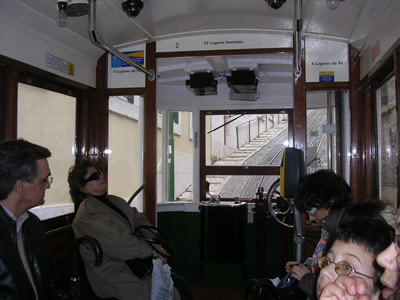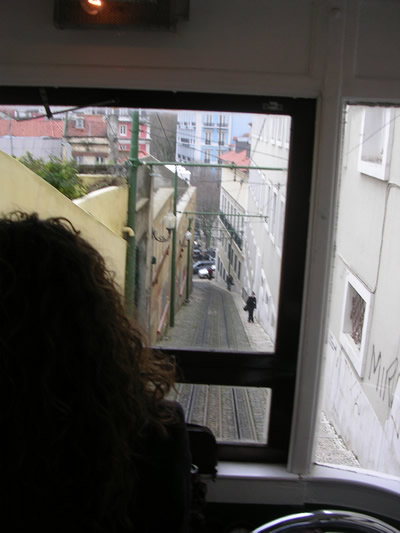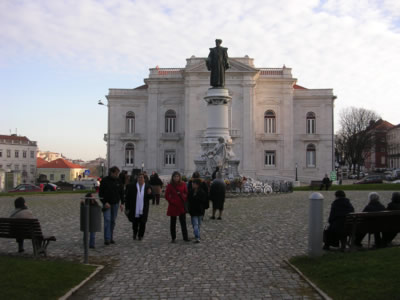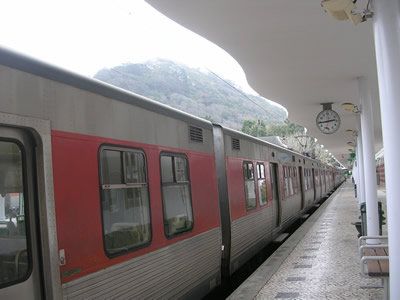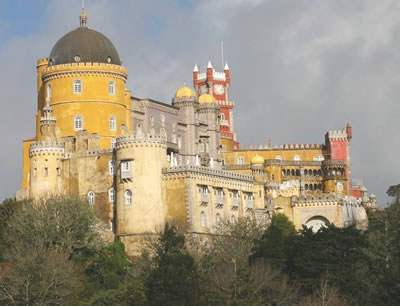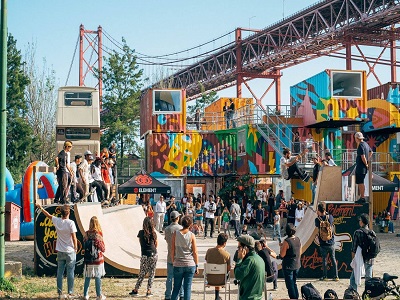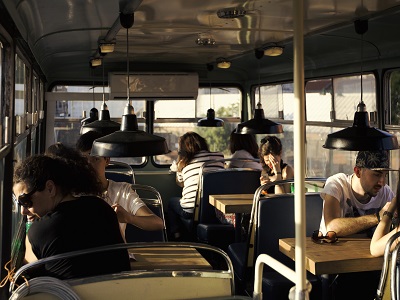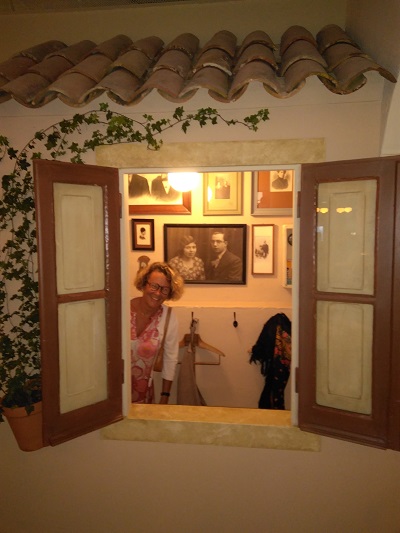For the most breathtaking views of the Tagus and Lisbon, walk the esplanades and climb the ramparts of the old Castelo de São Jorge (Castle of Saint George), located on the highest of the seven hills of the historic centre of the city. It is one of the main historical and tourist sites.

Castle of Saint George
Singer inside the walls of the Castle (video)

Entrance Castle of Saint George Lisbon
Although the first fortifications on the Lisbon hilltop are known to date only from the 2nd century BC, archaeological research has shown that human occupation exists there at least since the 6th century BC, originally from autochthonous Celtic and Iberian tribes (with probable Phoenician, Greek and Carthaginian influences), afterwards Roman, Suevi, Visigothic and Moorish.

Castle of Saint George
In the context of the Christian Reconquista the castle and the city of Lisbon were retaken from the Moors by King Afonso Henriques with the help of Northern European crusaders taking part on the Second Crusade. The Siege of Lisbon, which took place in 1147, was the only success of that Crusade.
Knight Martim Moniz
According to a famous legend, the knight Martim Moniz, noting that one of the doors to the castle was opened, prevented the door from closing again with his own body, sacrificing his life but allowing the Christians to enter the castle.

In the square stands a heroic statue — sword in one hand, shield in the other — of the first king, Afonso Henríques

Picture: Martijn Kramers
Many of the existing walls were erected during the centuries of Moorish domination. The Moors held power until 1147, the year Afonso Henríques chased them out and extended his kingdom south.
Even before Lisbon became the capital of the newly emerging nation, the site was used as a royal palace.

Wonderful views!
The castle overlooks the historic area Alfama, the mountains of Monsanto and Sintra, Ponte do 25 de Abril (25 April Bridge), Praça do Comércio, and the tile roofs of the Portuguese capital, Lisbon.

Castle of Saint George (Castelo de São Jorge)
Address: Rua da Costa do Castelo
Bus: 37 Tram: 12 or 28
Website: www.castelosaojorge.egeac.pt
Prices: check the website, free for children under 10



